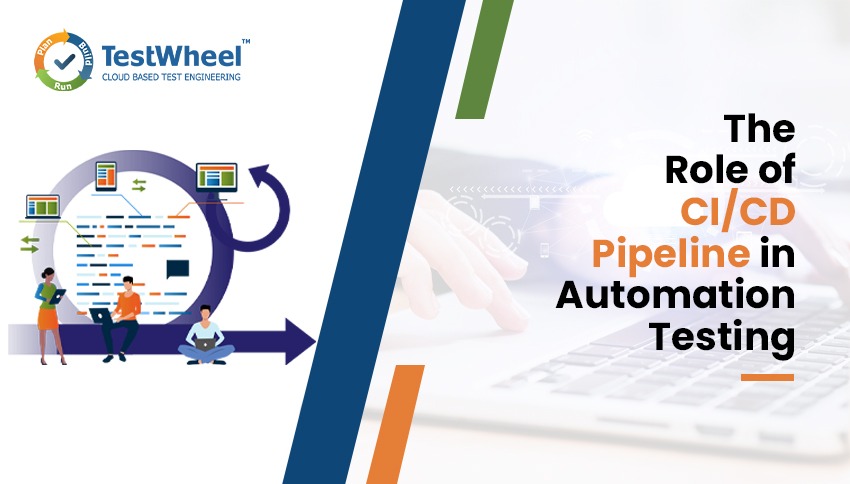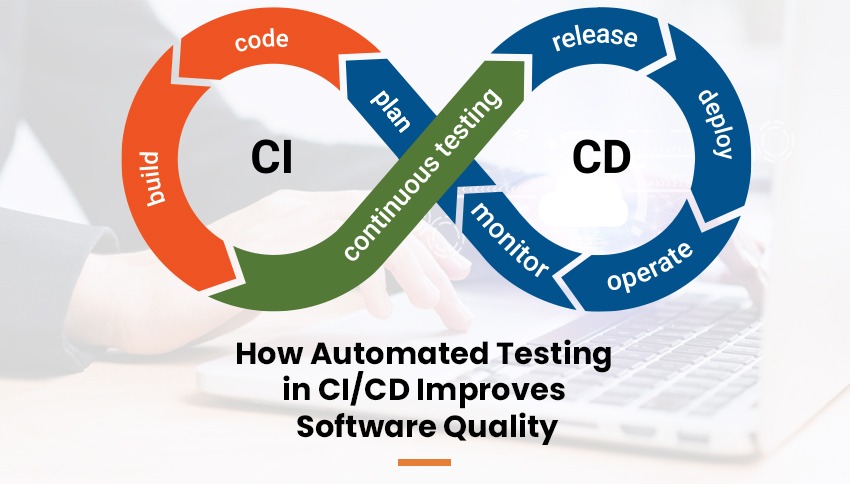- May 22, 2024

For any software development organization whether small, medium, or corporate, their ultimate goal is to efficiently optimize the software delivery. This blog discusses useful tailored insights for them. In an era of frequent releases to accommodate new features and updates, maintaining rigorous testing processes is essential.
The failure of on-time releases may put organizations at risk in this competitive market and create a major impact on their revenue growth. CI/CD (Continuous Integration/Continuous Delivery) is the methodology that aligns with your development process and improves the efficiency of the code and delivery process. Leveraging the CI/CD process encourages the developers and testers to continuously integrate with the workflow and organizations seamlessly accomplish the on-time releases.
Table of Contents
What is (CI/CD) Continuous Integration and Continuous Delivery Pipeline?
In Software engineering, the combined practices of continuous integration and continuous delivery are known as CI/CD occasionally extending to continuous deployment. It creates the essential pipeline that helps to streamline the development process starting from the code commit to deployment. In the process of the modern software development lifecycle, the CI/CD pipeline delivers more reliable products quickly through its repetitive test cycle, and high test coverage and identifies the bugs in the early stages.
Continuous Integration
Developers sometimes make changes due to the requirements such as feature updates and integrate with a repository like Git. Whenever changes are made, automated builds and tests are triggered to catch any integration issues early on.
Continuous Delivery
The continuous delivery simultaneously functions with CI and automatically deploys the built codes to the testing or production environment. It ensures the built codes are executed in the required stages and packaged to proceed to the next stage.
How Automated Testing in CI/CD Improves Software Quality
Automated testing plays a vital role within CI/CD by integrating seamlessly and providing significant benefits for software quality.
Faster Feedback Loops and Early Defect Detection
The CI/CD pipeline is designed to automatically trigger any changes made in the code and create a faster feedback loop for developers and testers. This approach helps teams catch bugs in the early stages, allowing them to be fixed before production release. As a result, organizations can save time, costs, and resources.
Increased Test Coverage
Based on the modifications made to the codes, the CI/CD integration regularly runs the tests as per the commitment. When interpreted with a human test cycle the number of catching bugs is less. When automating the entire test suite increases test coverage and saves time.
Automated Deployments
After the codes are merged into the repository, the CI/CD pipeline automates the deployment process to the next environment and ensures that the changes have not affected the existing functionality. The manual intervention and chances of occurring errors in this process can be avoided.

How do Organizations Achieve Smooth Automation Testing with CI/CD Implementation?
By designing the testing strategy and proper implementation in the development cycle organization can achieve seamless automation testing.
Choosing the Right Tools
Choose the right CI/CD platform that aligns with your testing requirements and the framework you are proceeding with. Some common CI/CD platforms are Jenkins, GitLab, and Azure DevOps.
Test Automation Framework
Based on the project specifications and programming language involved in your SDLC select the ideal test automation framework tool. Conducting extensive research and budget allocated for your project helps to identify the right test automation platform.
Designing Testing Strategy
Identify the complex functionalities of your project and prioritize them in your test cycle. Categorizing the test cycle helps to align the CI/CD pipeline with your automation platform.
Integrate Testing into the Pipeline
Configuring test execution into the pipeline is crucial to achieving smooth automation testing. Set up the CI/CD integration to trigger the test at the specified point in the pipeline to streamline the process effectively.
Manage Test Artifacts
Develop the system with your CI/CD pipeline to store and manage the test results and logs for future access and analyses for teams.
A Clear Test Suits
Plan and create well-defined test scripts that are easy to access and update at any time and with anyone from your team.
Transformative Trends in Continuous Integration and Continuous Delivery Pipelines
With each passing year and the advent of advanced innovations, the realm of Continuous Integration and Continuous Delivery (CI/CD) is witnessing numerous transformative trends that are set to redefine its landscape. These trends will specifically focus on critical elements, including automation, security, user experience, and the well-being of developers.
AI and Machine Learning
By implementing AI/ML in automation testing, it is possible to automate test script creation, identify complexity in pipelines, and predict future defects. This will take testing methodologies to the next level by transforming them.
Self-Healing Tests
Self-healing is a mechanism in automation testing that automatically heals the changes in the code. It not only identifies the broken locators but also learns from past test runs and predicts future failures.
Focus on Security
Security is paramount. We’ll likely see a rise in automated security testing tools that integrate seamlessly into CI/CD pipelines, ensuring vulnerabilities are identified and addressed early in the development process.
Cloud-Based Testing
Cloud-based test engineering delivers reliable solutions for complicated test cycles (integration testing, regression testing, security testing) and it is flexible to adopt the broader test suite and provides a scalable test solution.
Why must Organizations Adopt Continuous Integration and Continuous Delivery?
In the evolving landscape, organizations that are striving to foster their software delivery process should adopt CI/CD methodology into their automation testing. Leveraging the CI/CD pipeline provides faster feedback loops, repetitive tasks, and identifying the bugs in the early stages, through organizations achieving faster releases. It enhances software quality, scalability, and reliability and streamlines the development process effectively.
To be competitive in the market, designing testing strategies and providing innovative solutions for complex problems is imperative. Implementing advanced technologies in the development process and utilizing efficient automation tools will always keep your organization ahead of the curve. To effectively handle your testing process, visit the TestWheel automation testing tool and integrate with Azure DevOps which streamlines your development process from code commits to releases. To get started on a successful testing journey try TestWheel now.
